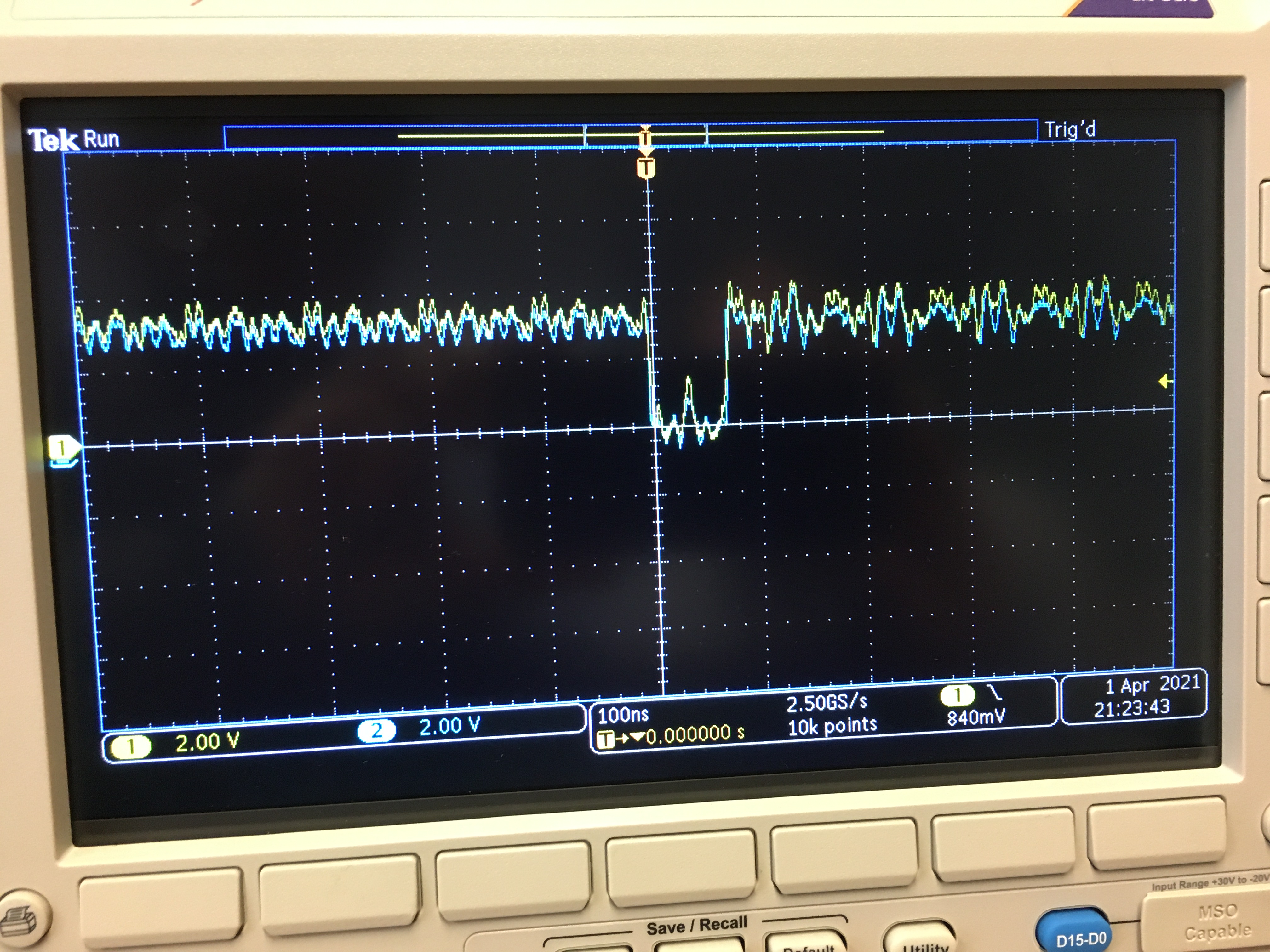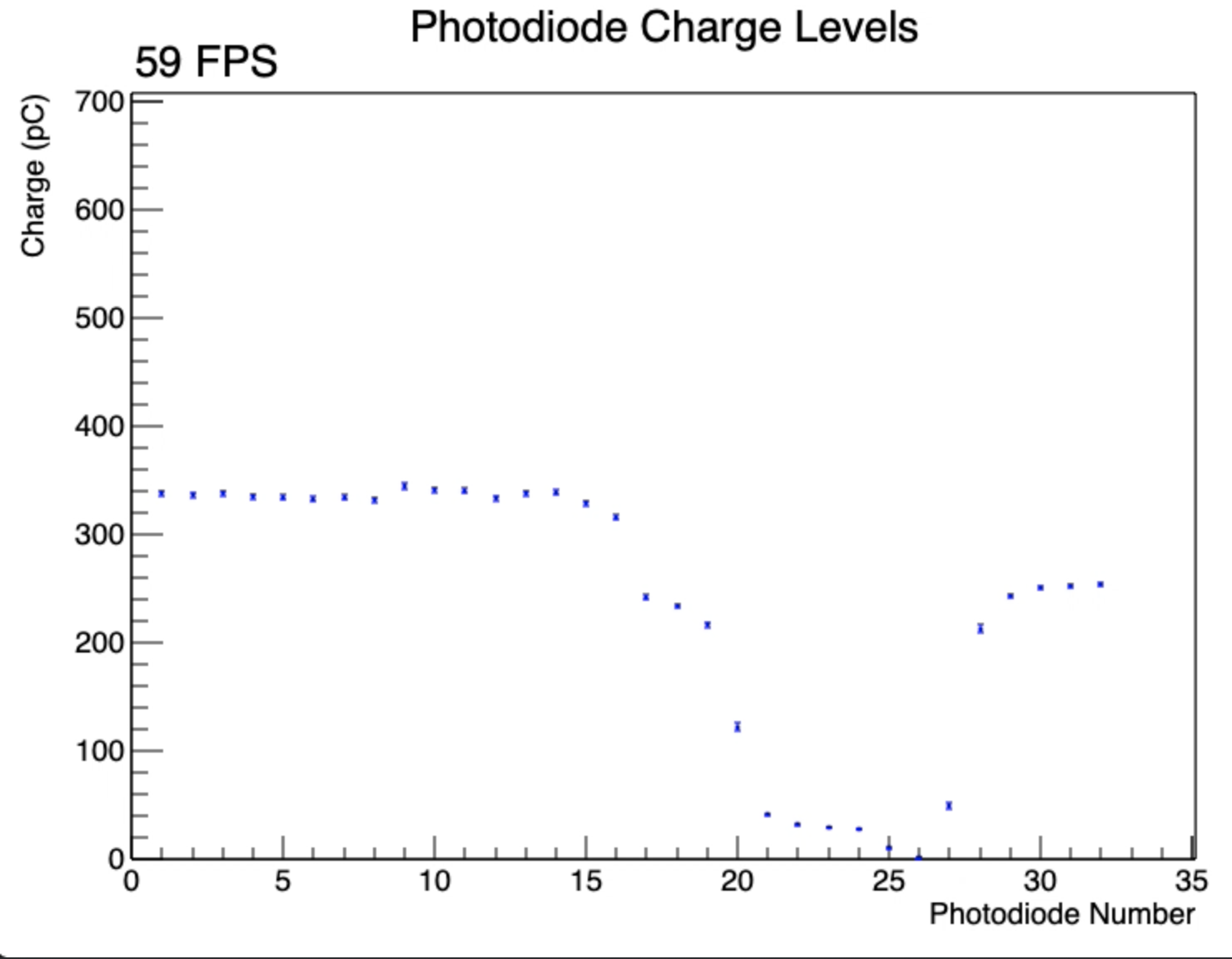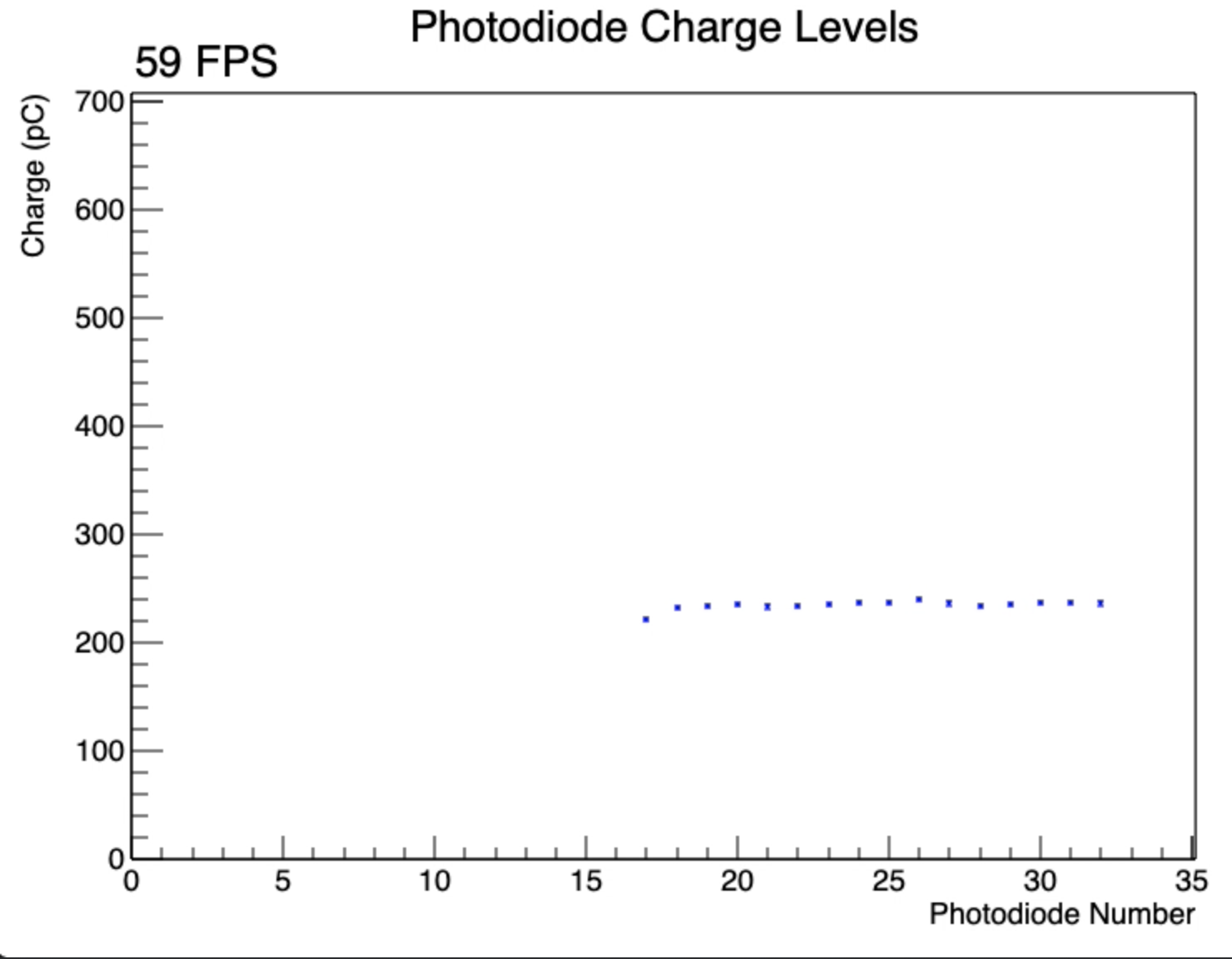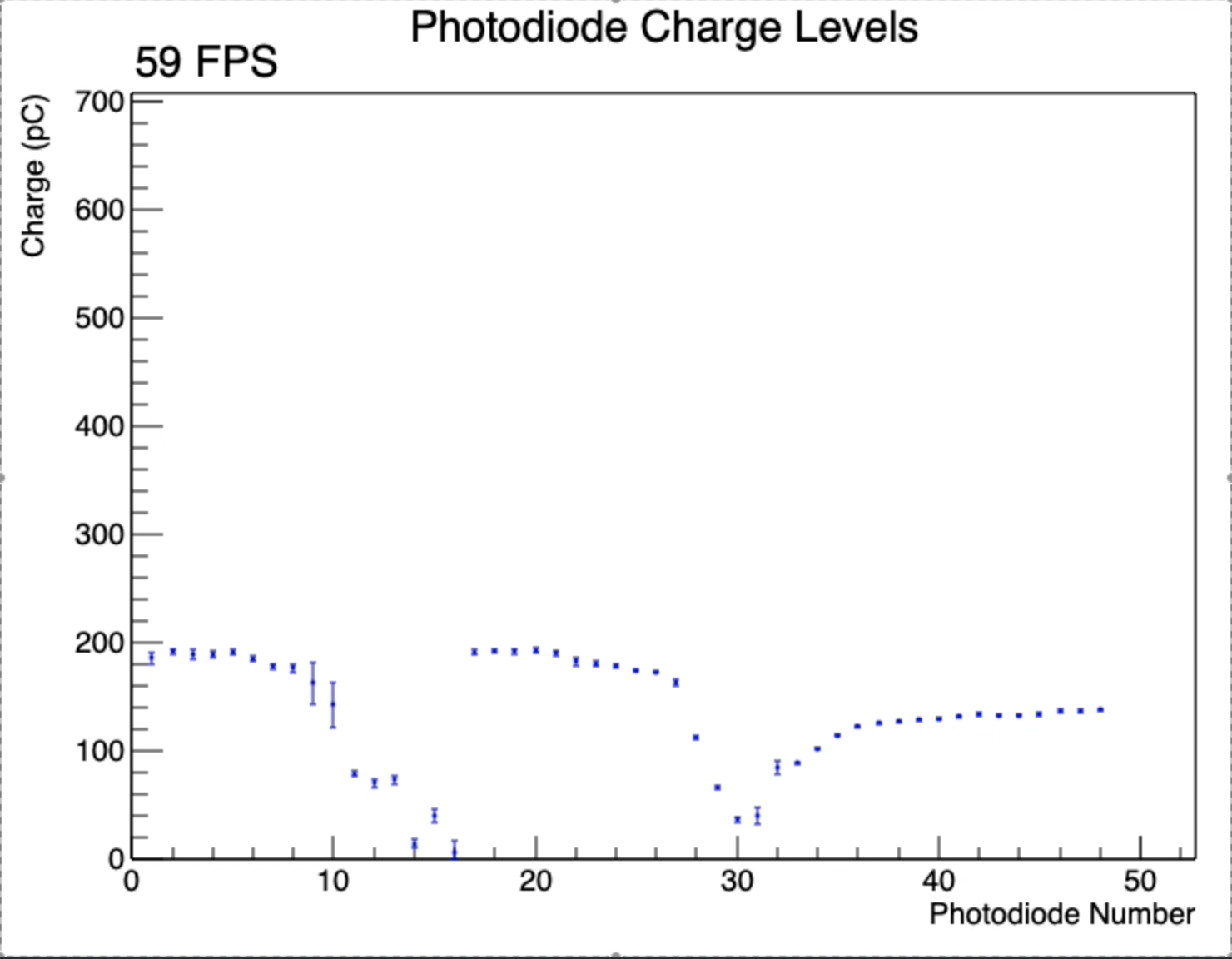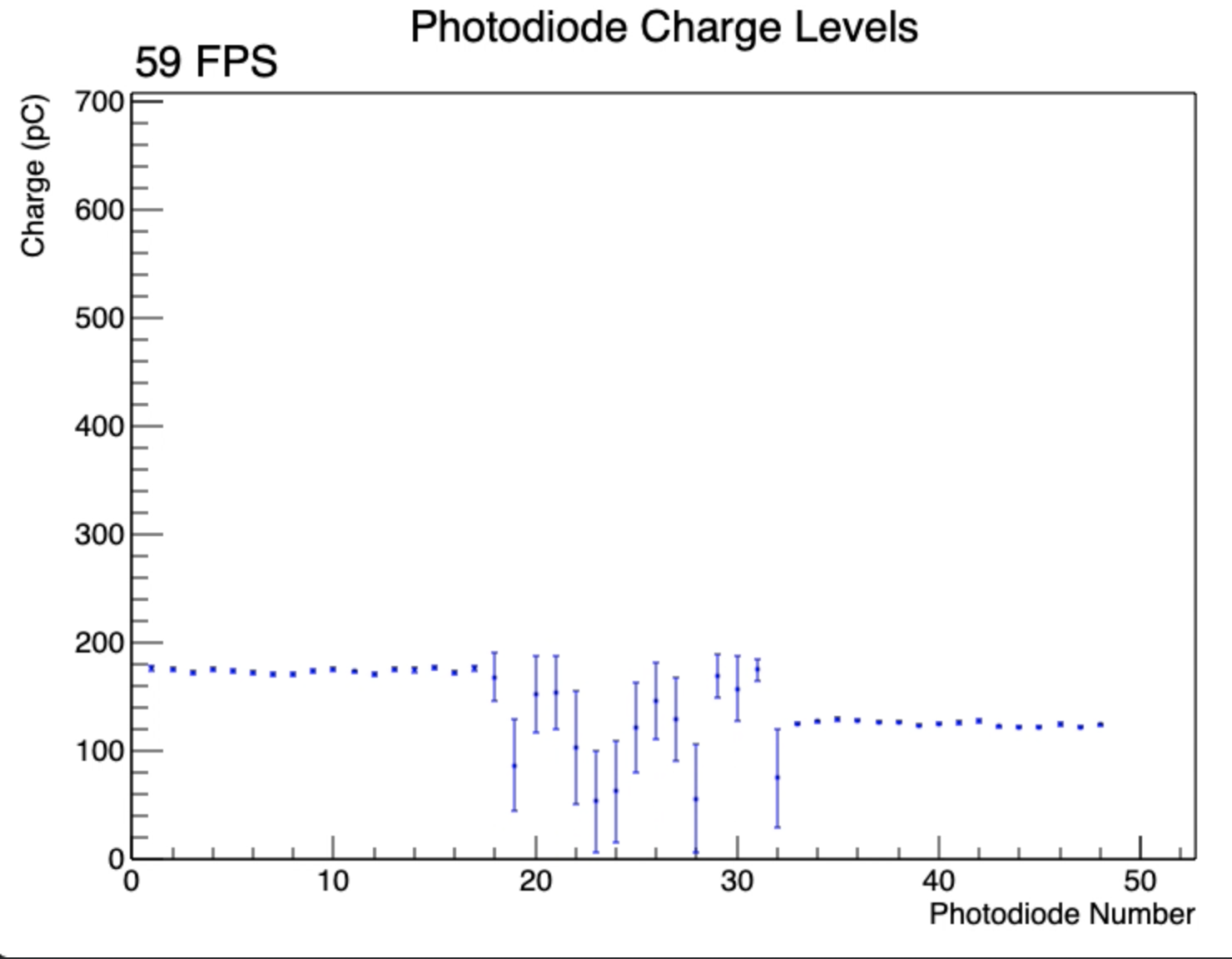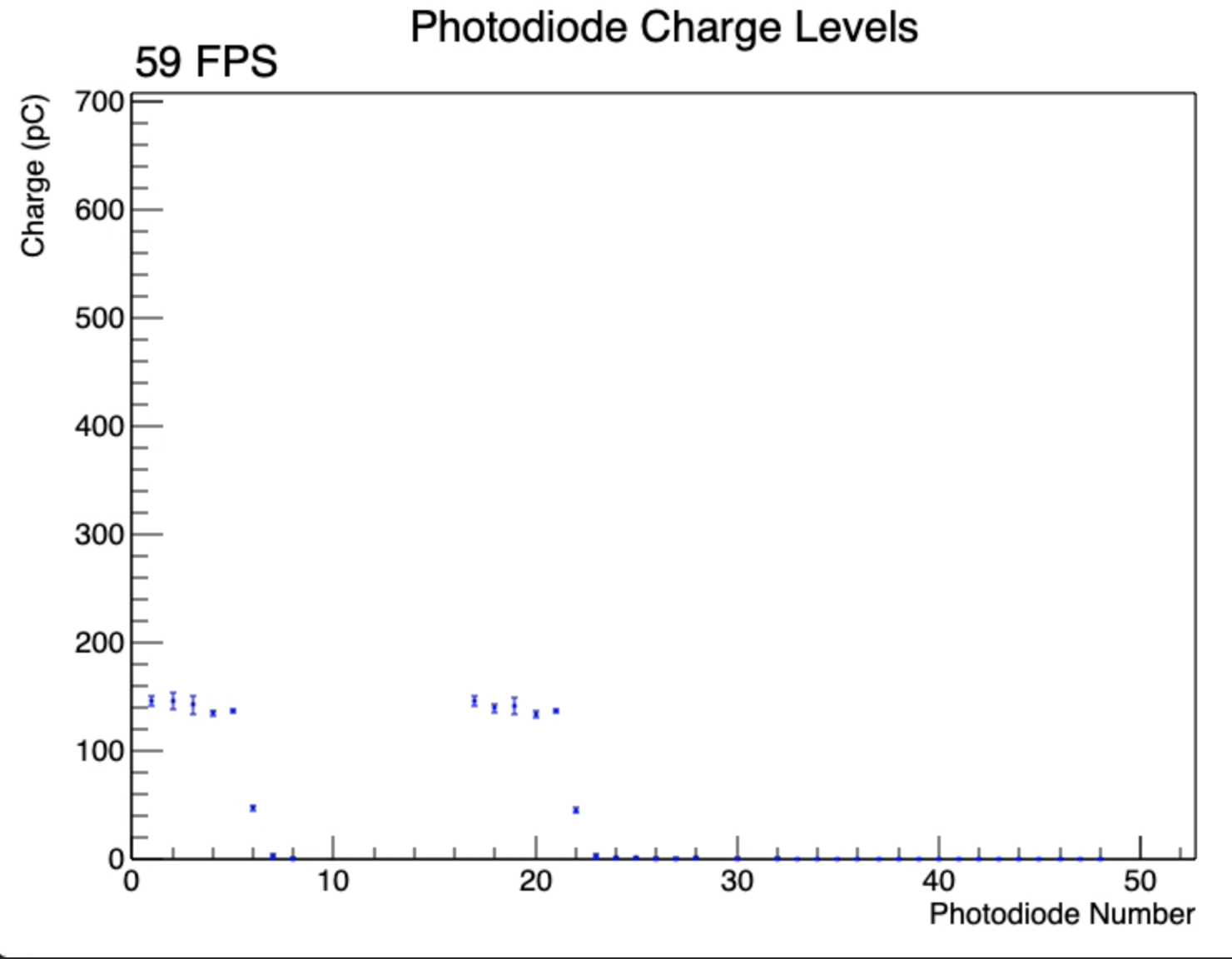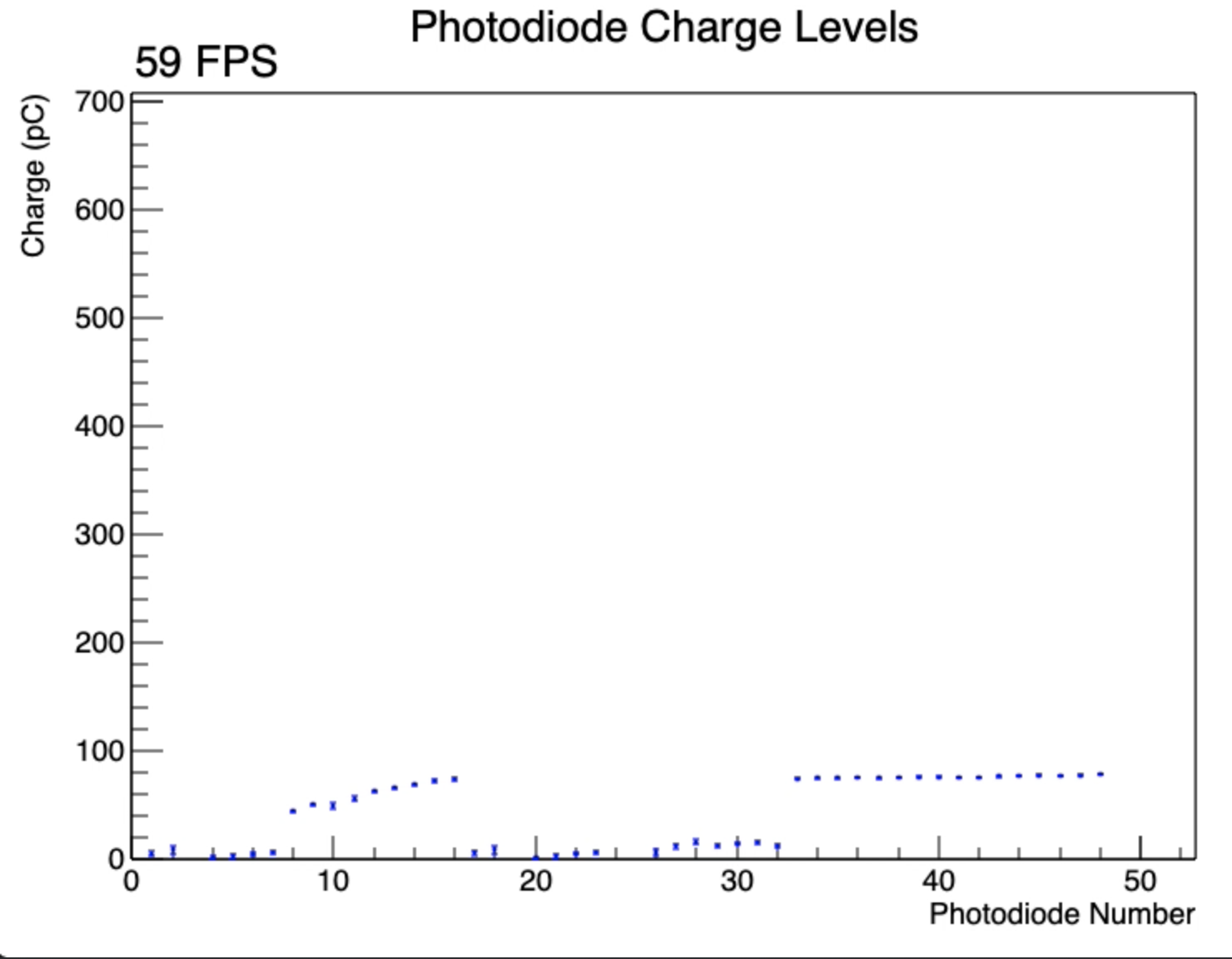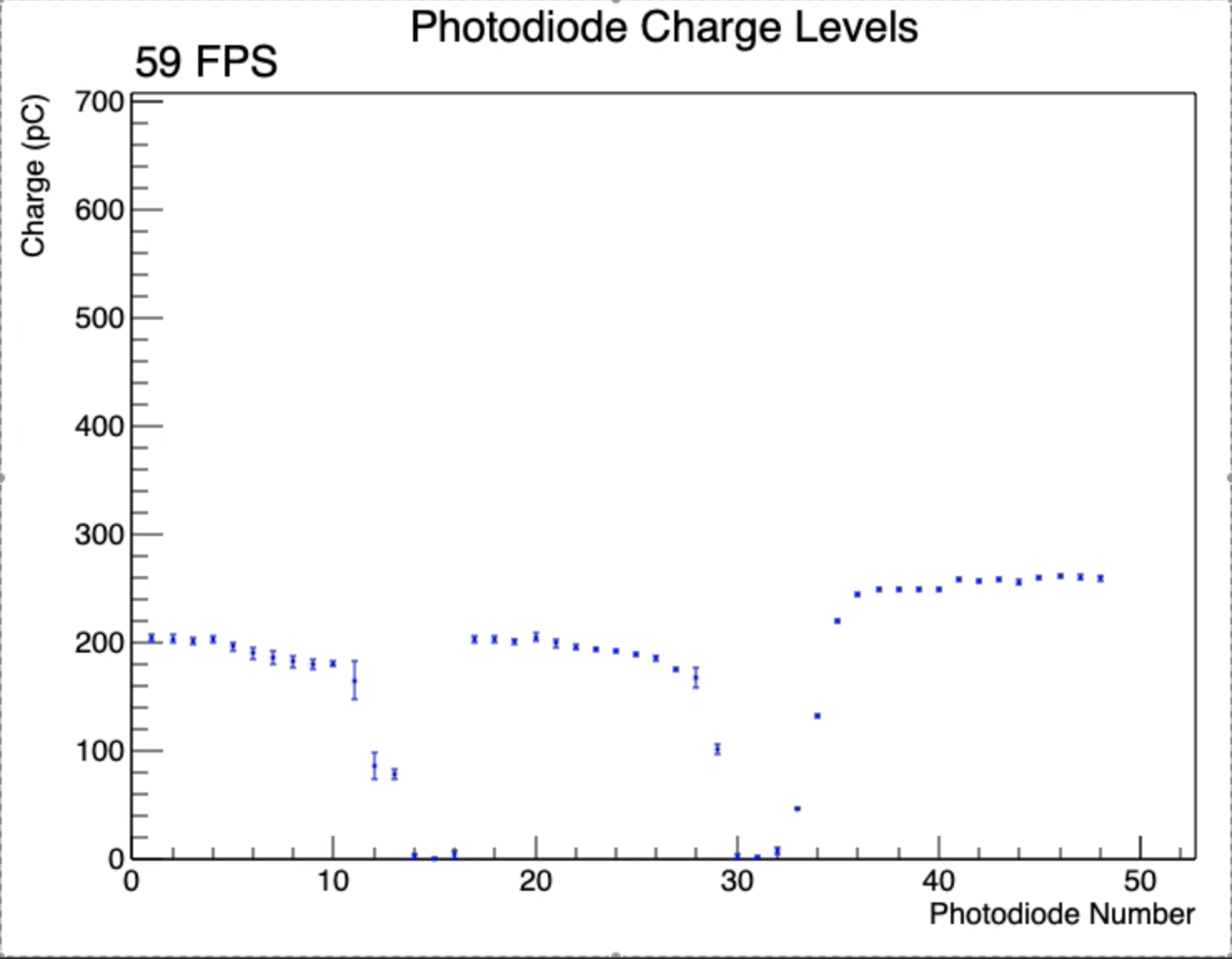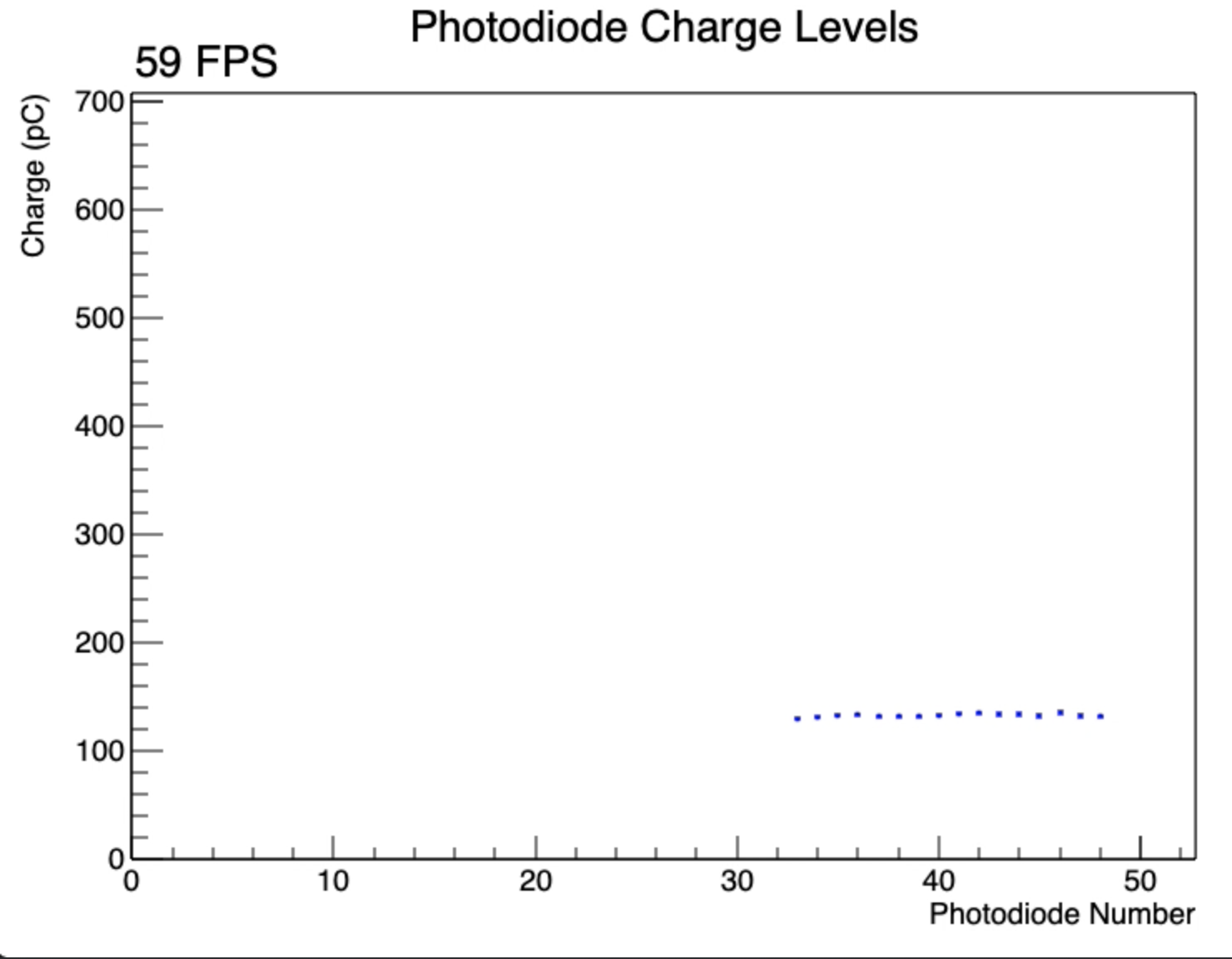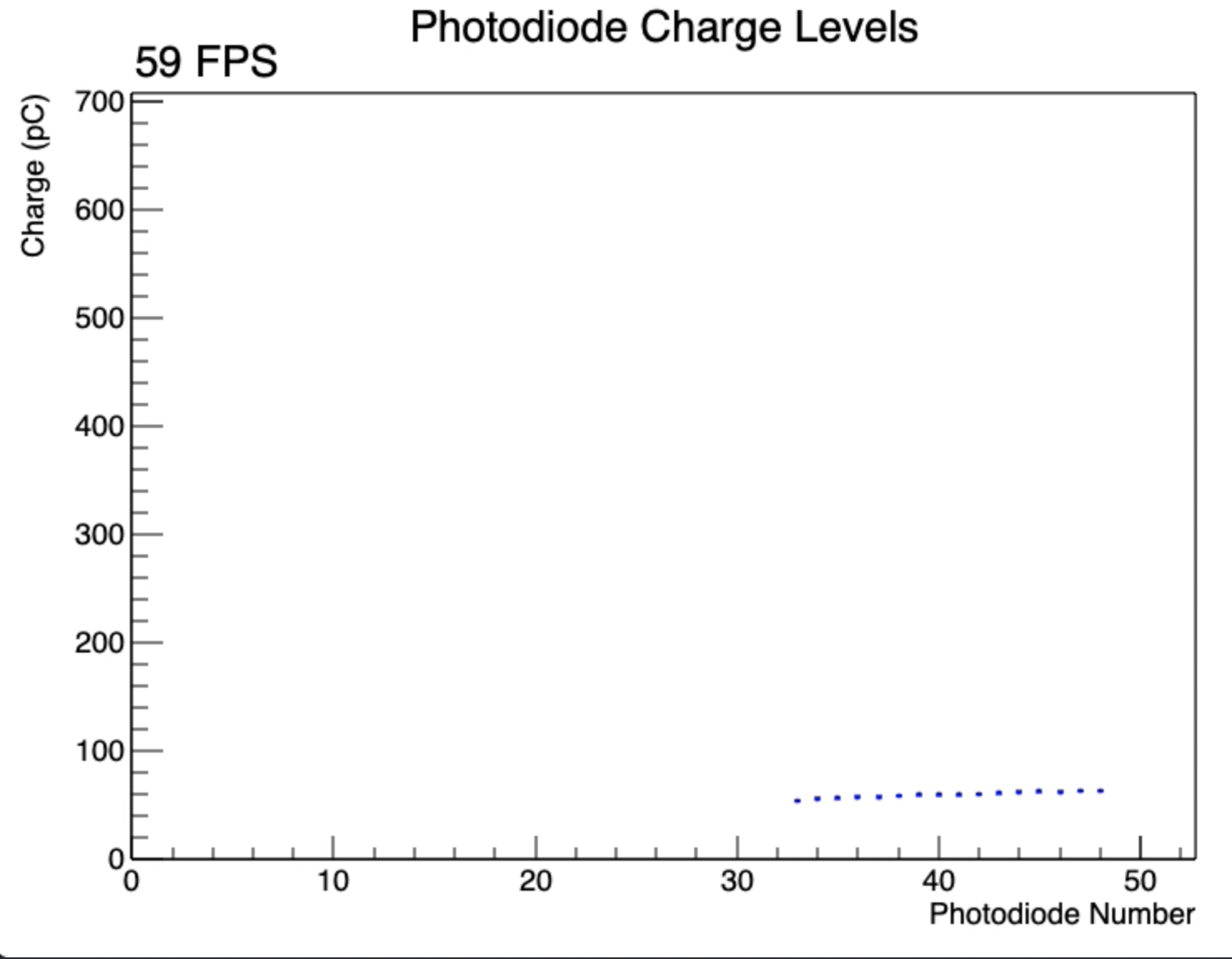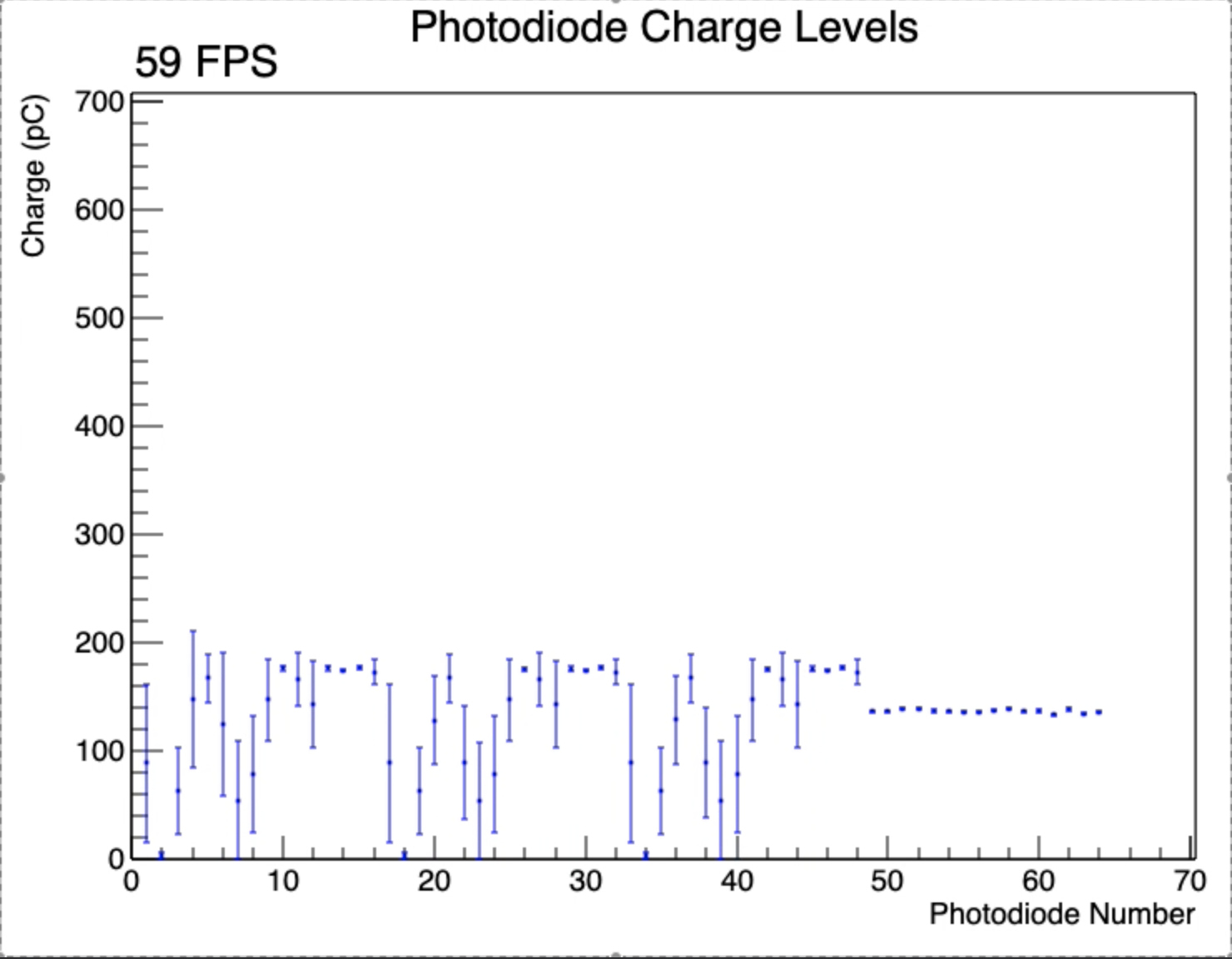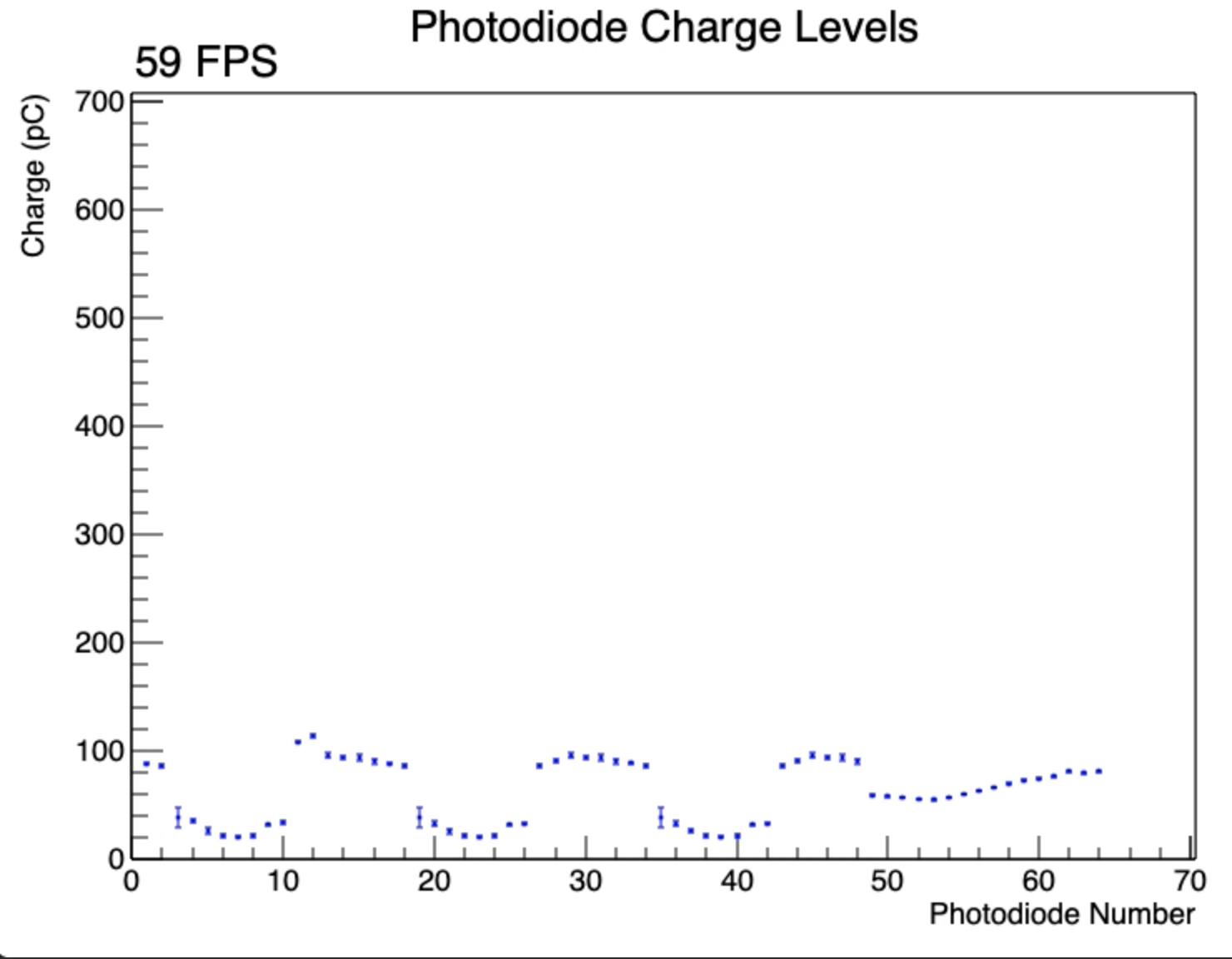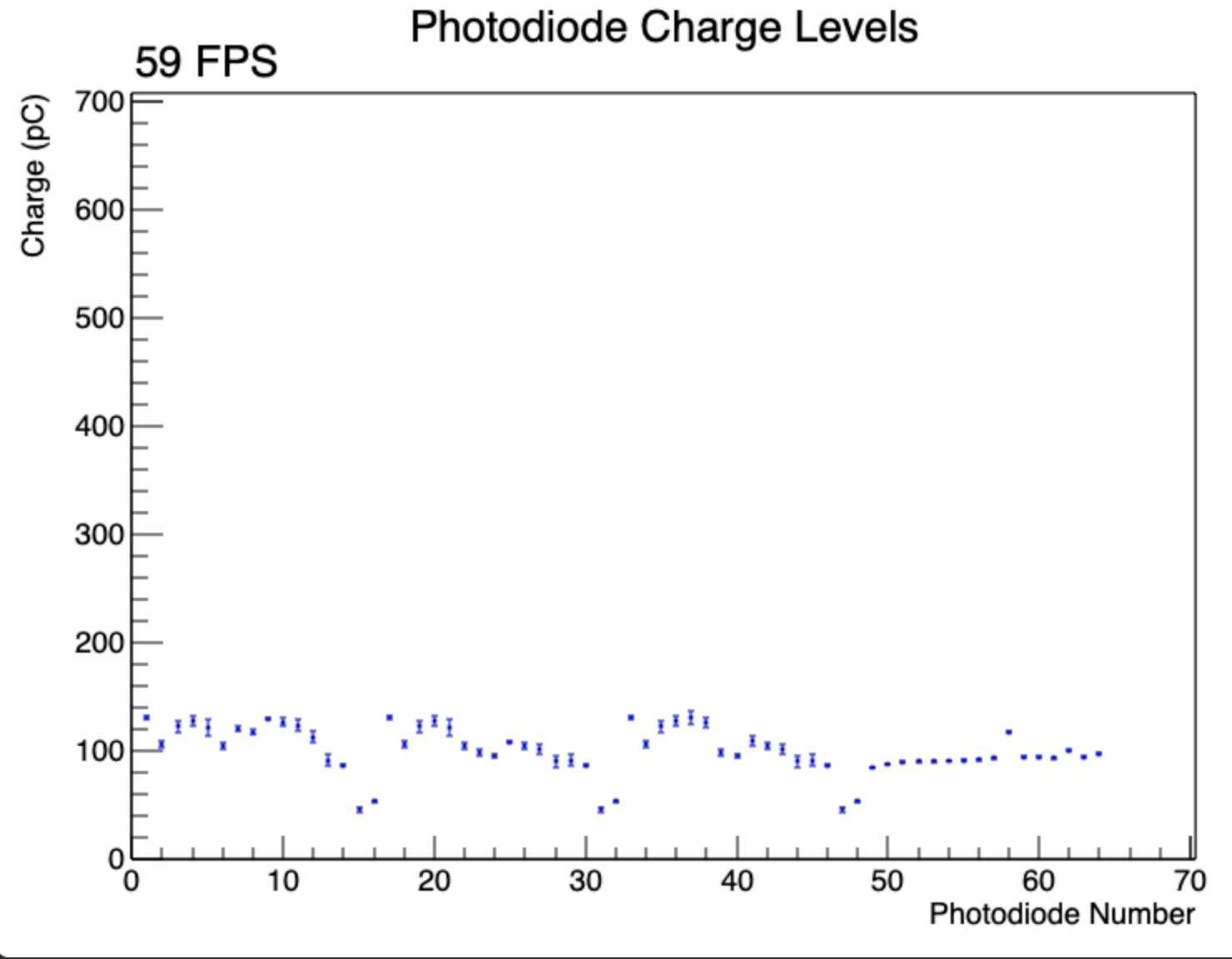Proton Calorimetry/Experimental Runs/2021/Apr1
Daisy chain tests of second DDC232 prototype in D109
Aim: Debug "mirroring" issues when daisy-chaining more than 2 DDC232s boards. Test signal quality across boards using 500MHz oscilloscope.
Notes
- 3 DDC232 boards have S12915-16R photodiodes.
- 4th DDC232 board has 1k ohm resistors.
- In the runs below, boards are enumerated right to left, with the right-most board (1st board) connected to the FPGA.
- In the configuration column, P = board with photodiodes and R = board with resistors. The first board listed in this column is connected to the FPGA.
- In all runs, an integration time of 170us and full-scale range of 350pC is used.
Traces saved in /unix/www/html/pbt/wikiData/images/DDC232/20210401
| Run | Board Configuration | Scope Trace Description | Video |
|---|---|---|---|
| 1 | P | Yellow trace shows DVALID at FPGA, blue shows DVALID at J2 of DDC232 board. | |
| 2 | 3, 4 | Rotation of boards followed by swept covering of a few photodiodes in turn with black cloth. Boards initially facing downwards but rotated upwards to expose to room lighting. Sweep begins around 10s mark. Note similar behaviour to above. | |
| 3 | 3, 2 | Rotation of boards followed by swept covering of a few photodiodes in turn with black cloth. Boards initially facing downwards but rotated upwards to expose to room lighting. Sweep begins around 5s mark. Note that channels 1-16 show no output as they have been replaced with resistors; also, there is no mirroring. | |
| 4 | 3, 1, 4 | Rotation of boards followed by swept covering of a few photodiodes in turn with black cloth. Boards initially facing downwards but rotated upwards to expose to room lighting: boards rotated repeatedly to examine signal dropouts on board 4. Sweep begins around 47s mark. Note that the mirroring is the lowest of the photodiode pairs on boards 1 and 4. Note also that very noisy signals and signal dropouts are seen on board 4 (photodiodes 1-16) and that this is not replicated on board 1; so whatever is causing this noisy behaviour does not contribute to the mirroring. Compare this to run 2 above where these noisy signals and dropouts are not seen. | |
| 5 | 3, 4, 1 | Rotation of boards followed by swept covering of a few photodiodes in turn with black cloth. Reording of boards from run 4 above. Boards initially facing downwards but rotated upwards to expose to room lighting. Sweep begins around 25s mark. Note that the behaviour is similar to run 4 with board 4 still noisy and that this noise is not mirrored but that the low signals are mirrored between boards 1 and 4. | |
| 6 | 3, 4, 1 | Swept uncovering of each photodiode in turn. Sweep begins near the start of the video but it only seen in the signals once board 1 is fully uncovered and board 4 starts to be uncovered. Mirroring appears to be connected to lowest output, not largest, for mirrored pairs. | |
| 7 | 3, 4, 1 | Swept uncovering of each photodiode in turn - in opposite direction to run 6 - followed by board rotation and swept covering with finger. Note that board 4 shows zero output during uncovering due to signal dropouts associated with rotation. Low signals around 1m25s mark are a results of covering photodiodes partially with a finger. | |
| 8 | 4, 3, 1 | Swept uncovering of each photodiode in turn followed by board rotation and swept covering with finger. Repeat of run 7 above but with board reordering. Note that board 4 no longer shows noise when rotated now that its the last board in the chain. | |
| 9 | 3, 4, 2 | Rotation of boards followed by swept covering of a few photodiodes in turn with black cloth. Now includes board 2 with resistor-shorted photodiode connections. Note that neither boards 4 or 2 show any output, corroborating that low values are mirrored despite board 4 being exposed to light. | |
| 10 | 3, 2, 4 | Rotation of boards followed by swept covering of a few photodiodes in turn with black cloth. Reording of boards from run 9 above: note that the behaviour is similar with no output from boards 2 and 4. | |
| 11 | 3, 1, 4, 2 | board rotation and sweep covering of photodiodes | |
| 12 | 3, 4, 2, 1 | board rotation and sweep covering of photodiodes | |
| 13 | 3, 2, 1, 4 | board rotation and sweep covering of photodiodes |
